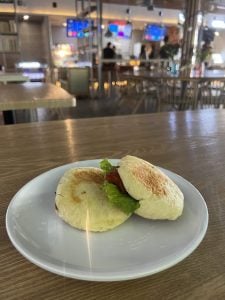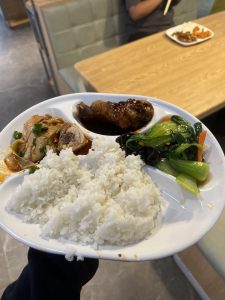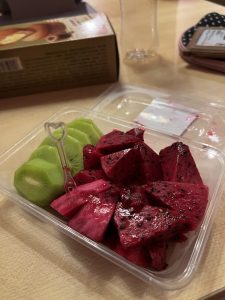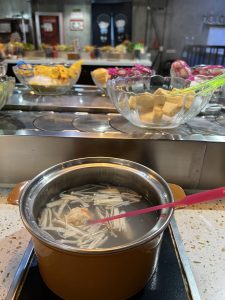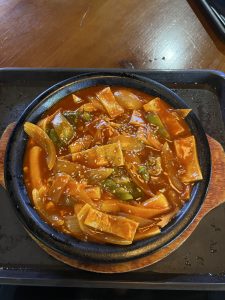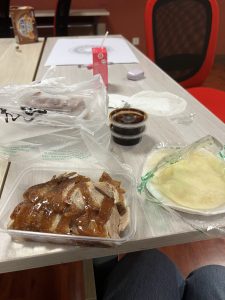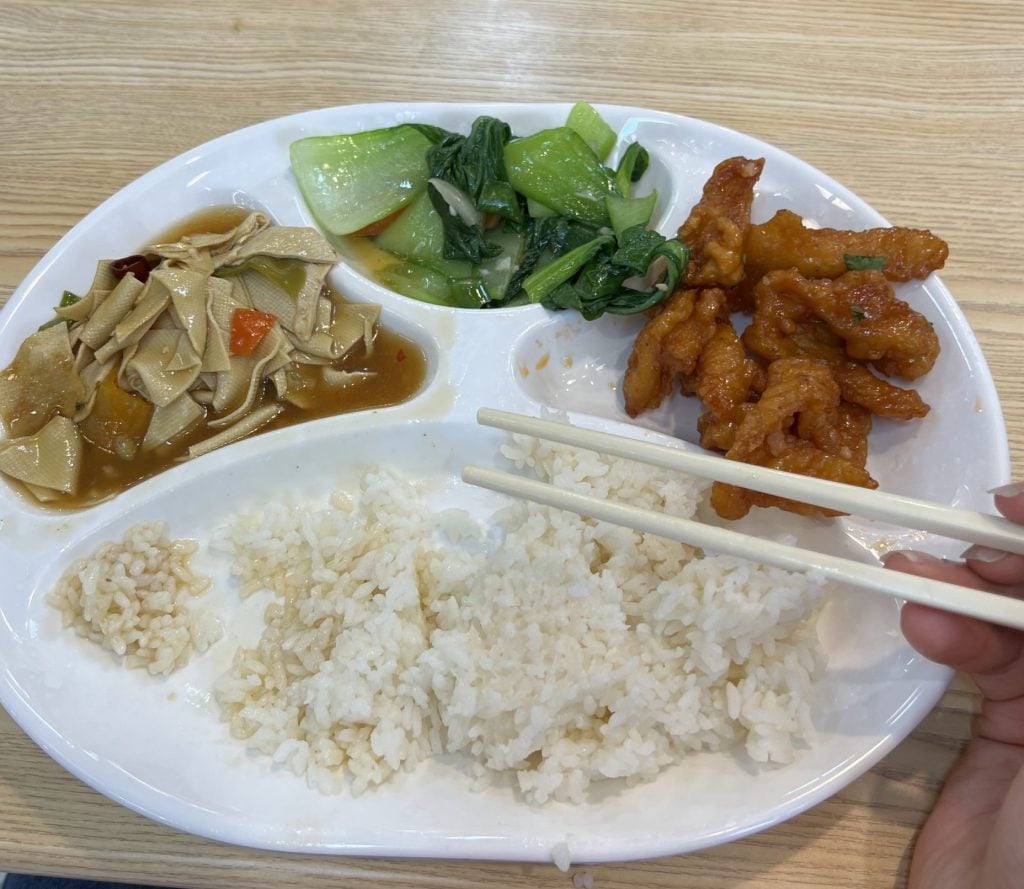
Meal Costs in China as a TBC Student
One of the many perks of living in China as an American is the price of day-to-day living. At my home university, Seattle University, I may have to spend $10-$15 for a single meal, I can expect to pay $1 to $2.50 per meal at one of UIBE’s four canteens. Most frequently, I eat at the International Plaza canteen which is conveniently situated in the basement of the dorm building where all TBC students live. Another one I frequent is the halal canteen which is not too far away from my dorm building and has two floors. Occasionally I will go to the first canteen which has four floors and the second canteen. All canteens at UIBE have a variety of foods to eat and choose from so that I never get sick of eating the same thing every day.
A standard day of eating cost can go a little like this:
Like a true college student, I usually skip breakfast and go straight to lunch in the morning. On some busy days like today, I have work in the morning at TBC before going to class. So today I opted for breakfast at the halal canteen (清真餐厅). I grab two small “roujiamo” that is known as a Chinese style burger and continue my way to work. These two roujiamos cost me 8 yuan altogether. That is equivalent to $1.10.
Lunchtime rolls around, and I usually go back to one of the canteens to eat my lunch. My favorite thing to get is the 快餐 which is rice with two or three sides of meat and veggies to eat with it. Every day you can switch up what types of dishes to compliment the rice and I have yet to get sick of making new combinations. The standard two sides will usually be around 13 yuan which is about $1.78 depending on which vendor you go to and if you get the takeout box which adds on about 1 or 2 yuan (.14 cents). Today I got rice with sweet orange chicken, and a side of steamed and seasoned bok choy. At this canteen, I also enjoy barbecue, beef noodles (and various other noodles), Xinjiang-style fried rice, ramen, chicken burgers, milk tea, and ice cream, among other things I have yet to try.
Before getting to dinner, I have an unusually long day of classes (just every other Monday) with one class ending at 9. So, I decided to bring a snack that I bought yesterday at one of the three student markets on campus. This one is called Wu Mei (物美) and is near the girl’s dorm, or as people here like to call it, the Princess Building. In my snack run last night I got ice cream, various types of la tiao snacks (a type of spicy Chinese snack I’ve grown to love), a breakfast bread with purple rice, a jug of water, and even a nail filer. In the end, all of this only cost me a total of $8.5 or about 60 Yuan. They also sell fresh precut fruit, a perfect snack.
For dinner, I usually get lazy and frequent the dorm basement canteen, also known as the International Plaza. There I can enjoy Indian, Mediterranean Japanese, Korean, Thai, and various Chinese foods. My favorite go-to dishes are the Indian chicken curry, hot pot, and Sichuan-style spicy fish. Today, I chose to get hotpot with some friends. The hot pot experience is unique. You go up to the counter to pick up your broth. Then, you take it to your spot where you can choose what you would like to add to your pot via a rotating conveyor belt. You can get various types of meat, seafood, dumplings, eggs, veggies, tofu, noodles, and so on. Additionally, you get to make your dipping sauce and have a variety of ingredients to choose from and play around with. The price of the hot pot depends on how much you eat. However, to fill my stomach I usually end up in the 25–32 yuan range which is only $3.42-$4.38 for some good and filling hotpot.
This is a typical day. For dinner and lunch, I also often order delivery or go out for dinner. Delivery in China is great! Usually there is no extra cost for delivery and often there will even be discounts. My favorite food to order is a type of Xinjiang food called chao mifan (炒米饭) initially recommended to me by my friend from Xinjiang. It only costs me 23-32 yuan ($3.02- $4.36) depending on if I want to add more chicken, fish tofu, naan, etc. Beijing has many restaurants and most places you can order delivery straight to campus, and it’s easy to navigate on the apps. Plus, the canteens will also deliver to the first floor of the dorms! Like anywhere, some places are more expensive than others but at the end of the day even a good 100-yuan meal is still just about $13.72 which is usually how much a bad meal costs me at my home school.
One of Beijing’s signature dishes is Peking duck. I once ordered some via delivery and due to my momentary craving, I wasn’t thinking straight and thought I was willing to spend a little over 100 yuan for some good roast duck. I accidentally ended up with several portions, instead of the one-portion meal I was expecting! This delivery of 120-yuan duck lasted me three days of meals. Thankfully, I could easily store the food in my dorm room fridge and reheat it in the TBC lounge in the basement of the dorm building.
In conclusion, my day-to-day cost of living in China is not very high. With meals costing under $10 for the whole day at the UIBE canteens, the cost of eating is nothing compared to my home in Seattle. Even buying items at grocery stores and Taobao (China’s Amazon) is much cheaper than getting things in America and has made my stay here easier. Aside from that, getting snacks and everyday essentials from the UIBE student marts is quite convenient. Having meals in China has been fun, delicious, and cheap.
By Nabeeha Misbah, Fall 2023 student



